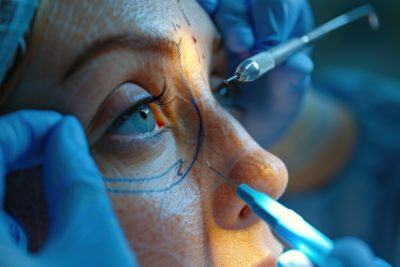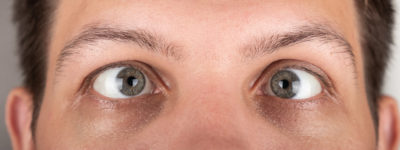What is Bevacizumab?
Bevacizumab is a monoclonal antibody medication used in the treatment of various types of cancers and certain eye conditions. It is commonly known by its brand name “Avastin.” Bevacizumab works by inhibiting the growth of new blood vessels, a process known as angiogenesis. By blocking angiogenesis, it can slow down the growth and spread of cancerous tumours and also treat certain eye conditions characterised by abnormal blood vessel growth.
Bevacizumab, sold under the brand name Avastin among others, is a medication used to treat various types of cancers and certain eye conditions, including age-related macular degeneration (AMD). In the context of AMD, Bevacizumab is used off-label, which means it’s prescribed for a condition other than what it was initially approved for.
Bevacizumab belongs to a class of medications known as anti-angiogenic drugs, which inhibit the growth of new blood vessels. In the case of AMD, it is primarily used for the wet or neovascular form of the disease. Wet AMD is characterised by the abnormal growth of blood vessels behind the retina, which can leak blood and fluid, causing damage to the macula, the central part of the retina responsible for central vision.
Here’s how Bevacizumab works for macular degeneration:
Inhibition of Vascular Endothelial Growth Factor (VEGF):
Bevacizumab works by blocking a protein called vascular endothelial growth factor (VEGF). VEGF is a key factor in the growth of new blood vessels, and it plays a role in the development of the abnormal blood vessels seen in wet AMD. By inhibiting VEGF, Bevacizumab helps to reduce the growth of these abnormal blood vessels.
Reduction of Blood Vessel Leakage:
Abnormal blood vessels in the retina can leak blood and fluid, leading to swelling and damage to the macula. Bevacizumab helps to reduce this leakage by preventing the formation of new, fragile blood vessels and stabilising existing ones.
Maintenance of Vision:
By reducing blood vessel leakage and minimising damage to the macula, Bevacizumab can help slow down the progression of wet AMD and, in some cases, improve or maintain vision. However, it is important to note that
Bevacizumab may not work for everyone, and the effectiveness can vary from person to person.
Bevacizumab is usually administered as an injection into the eye. This intravitreal injection delivers the medication directly to the affected area, allowing it to target the abnormal blood vessels in the retina. Treatment with Bevacizumab typically requires multiple injections over time, as wet AMD is a chronic condition that may require ongoing management.
What Are the Uses of Bevacizumab?
Cancer Treatment:
Bevacizumab is primarily used in the treatment of cancer. It is often prescribed in combination with chemotherapy for various types of cancer, including colorectal cancer, lung cancer, kidney cancer, and certain types of brain tumours. Bevacizumab works by preventing the formation of new blood vessels within tumours, thereby limiting their blood supply and inhibiting their growth.
Eye Conditions:
Bevacizumab is also used off-label (meaning it is prescribed for conditions not officially approved by regulatory agencies) to treat certain eye conditions, especially in ophthalmology. One of its common uses is for the treatment of wet age-related macular degeneration (AMD), as explained in the previous response. It can also be used for other retinal conditions with abnormal blood vessel growth, like diabetic retinopathy and macular edema.
Other Medical Conditions:
Bevacizumab has been explored for the treatment of other medical conditions involving excessive angiogenesis, such as certain types of arthritis and other vascular diseases. These uses may vary and are often still under investigation.
What are the Symptoms?
The symptoms of a medical condition or disease can vary widely depending on the specific condition. Bevacizumab itself is a medication used to treat certain medical conditions, and it doesn’t directly cause symptoms. Instead, it is prescribed to address the symptoms and underlying causes of those conditions.
Here are some examples of symptoms associated with conditions that Bevacizumab may be used to treat:
1. Cancer
The symptoms of cancer can vary depending on the type and stage of cancer but may include:
-
Unexplained weight loss
-
Fatigue
-
Pain or discomfort
-
Changes in the skin, such as new moles or skin changes
-
Persistent cough or hoarseness
-
Changes in bowel or bladder habits
-
Lumps or masses
2. Wet Age-Related Macular Degeneration (AMD):
Symptoms of wet AMD can include:
-
Blurred or distorted central vision
-
Straight lines appearing wavy or bent
-
Difficulty recognizing faces
-
Dark or empty spots in the centre of vision
3. Diabetic Retinopathy
Symptoms of diabetic retinopathy can include:
-
Blurred or fluctuating vision
-
Dark or empty areas in your vision
-
Difficulty seeing well at night
-
Vision loss over time
4. Macular Edema:
Symptoms of macular edema can include:
-
Blurred or distorted central vision
-
Reduced colour perception
-
Visual distortions, such as seeing wavy lines









